Resources
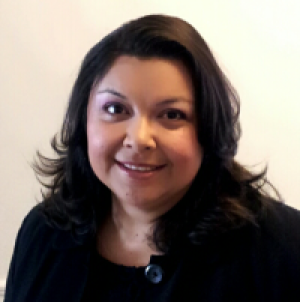
In 2015, the Department of Education reported that 1 in 5 women in the US is Latina. By 2060, this number is projected to be about 1 in 3 women. As a Latina, I was surprised by these numbers because I did not expect the current Latina population to be near 20% of the entire US female population and over 10% of the entire US population![1] In 2010 and 2015, 50.8% of the population in the US was female.[2] That means that over 10% of the entire US population is Latina and that percentage could be around 18% in 2060 if the projection is correct and the male/female ratio remains the same in the US.[3] But I was also alarmed by these numbers. Why? Because of other statistics about this population: While Latinas earn more bachelor’s degrees than their male counterparts, they still earn less than these men in the labor market. (Latinas earn only 56 cents on the dollar in comparison to Anglo/Euro-American males.)[4] About 33% of Latinas become pregnant by the age of 20.[5] Latinoa teens have consistently higher suicide rates than their black and white counterparts - 18.9% have seriously considered attempting suicide; 15.7% have made a plan about how they would attempt suicide; 11.3% have attempted suicide.[6] What does this have to do with teaching, religion, and politics? Well, if Latinas account for over 10% of the US population, and 60% of the Latinoa population[7] are citizens of the US, then we are saying that at least 6% of US citizens are Latinoa. Yet, I find few syllabi or resources at the university and seminary-level that are engaging issues of concern for Latinas. The dearth is especially obvious in general education courses. This is significant because misperceptions of Latinas leads large numbers of US citizens to think that the majority of Latinas are not citizens and should be, depending on one’s political affiliations, treated accordingly. Many of my students in the Midwest have lived without engaging the Latinoa population and I have found in my teaching at the University of Dayton, and other institutions, that they do not know about the complex and varied realities of Latina life in the US. When I share with them that most Latinas are born citizens or born to citizen parents and then naturalized, students have told me that they thought most Latinas came to this country by crossing the Mexico/US border on rafts. I am concerned that talk of sanctuary spaces in response to statements made by the President-Elect will focus student attention on creating these sanctuary spaces with little regard to either the diversity of Latina life or the social issues which affect them. In other words, sanctuary spaces are not enough for us to fix the social ills of the pueblo. Our systems of education do not help to make these connections either. But, I believe we religion scholars have a special role to play in teaching and learning with and about Latinas.I am listing some resources below to start the discussion about this topic. What other resources do you know/have you used to teach with and about Latinas? Resources Ada María Isasi-Díaz. Mujerista Theology. Maryknoll, NY: Orbis Books, 1996. Jacqueline Hidalgo. Revelation in Aztlán: Scriptures, Utopias, and the Chicano Movement. London, UK: Palgrave Macmillan, 2016. Lara Medina. "Nepantla Spirituality: An Emancipative Vision for Inclusion" in Wading Through Many Voices (2011). Latinitas – www.laslatinitas.com – This Texas-based organization empowers young Latinas through media and technology to become strong and confident leaders. Maria Pilar Aquino, Daisy L. Machado, & Jeanette Rodrguez. A Reader in Latina Feminist Theology. Austin, TX: University of Texas Press, 2002. Various authors in Orlando O. Espín. The Wiley-Blackwell Companion to Latino/a Theology. Hoboken: NJ, 2015. [1] [2] [4] http://www.nationalpartnership.org/research-library/workplace-fairness/fair-pay/latinas-wage-gap.pdf [5] https://www.cdc.gov/nchs/products/databriefs/db136.htm [6] [7] http://www.politifact.com/punditfact/statements/2015/jul/29/jose-diaz-balart/majority-hispanic-population-us-born-says-jose-dia/; http://factfinder.census.gov/faces/nav/jsf/pages/index.xhtml
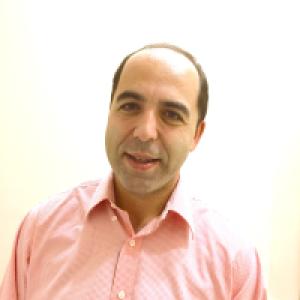
On November 8, 2016, I watched Ana Navarro telling ABC News that “there is a White America and there is a Brown and Black America, Chinese America, Muslim America.” Muslims, of course, are white, brown, black, Chinese, and many other things as well, so from a historical standpoint it is surely curious, if nothing else, to see how adherents of a major world religion have been squeezed into the “non-White” umbrella of the American racial classification scheme. Navarro’s comments got me thinking about my own research on Islam in the Soviet Union and the question of how large, cosmopolitan, majority non-Muslim societies have resolved the problem of finding a “niche” for Islam. I see many parallels between the political context of Islam in America today and discussions that took place in the colonial empires in the late-19th and early-20thcenturies. America is not an empire. Yet, like the British, French, and Russian empires, the U.S. is cosmopolitan, multiethnic, multifaith, and hosts a growing and prominent Muslim minority. The British, French, and Russian empires have a legacy of incorporating and dealing with Muslims that our society should be aware of. This legacy should be especially important to anyone teaching or talking about, the history of the modern Islamic world, anywhere. On the one hand, the elites of these empires, like many members of the American elite today, were firmly convinced of the inherent fanaticism and insularity of Islam, though they disagreed vehemently on whether such fanaticism stemmed from Islamic dogma (whatever that might be), or the historical and cultural circumstances of Muslim societies. The fact that these elites were Christian, secular, or some combination of the two, obviously colored their views about Islam, but so did the reality that their geopolitical interests placed them in an adversarial relationship with large swathes of the Islamic world. On the other hand, there was a vital and compelling need to extend Muslims some sense of belonging in the polity. Across the 19th century, the British, French, and Russians all sought to institutionalize Islam through the patronage of religious scholars, foundations, and shrines, and through various attempts to codify or otherwise make sense of Islamic law. With the right kind of interference, it was hoped, Islam could be civilized into a form that would make it worthy of inclusion and protection in the imperial framework. Why does this legacy matter in today’s college classroom? It is only a small overstatement to say that the current liberal/conservative impasse about Islam is a reiteration of an old colonial debate. Take, for example, the comments of Newt Gingrich who stated that “sharia is incompatible with Western civilization. Modern Muslims who have given up sharia—glad to have them as citizens.” It is perhaps fitting that Gingrich has a Ph.D. in history—though I realize I’m giving him too much credit here—because these two sentences are a crude restatement of the old colonial accommodation with Islam: join the imperial polity, but for God’s sake, practice the kind of Islam that you can show up to the Club with! In my classes on 20th-century history, which focus heavily on Muslim countries such as Afghanistan and Iran, we do not regularly discuss American politics or current events. We do, however, talk a lot about colonialism, and I try to make my students see the past through prisms that are relevant to their own lives. As it turns out, this has been relatively easy when it comes to the relationship between Islam and the state.
Our Philosophy of Workshops, Consultations, and Other Gatherings I. Teaching is a Vocation Discerning the telos or goal of one's teaching vocation is crucial to the teaching and learning task. Good teaching is grounded in sound scholarship and nurtures an ongoing discussion about one's subject area. Clarifying one's teaching philosophy and learning goals facilitates classroom decisions such as course design, assignments, and assessment. Faculty members gain vocational colleagues and companions when they think collaboratively about teaching and learning. Thinking holistically about the work of teaching and scholarship develops a sense of one's career trajectory and stages. When faculty members talk together about their craft, they discover a richness of teaching knowledge and experience among them. II. Teaching is a Craft Teaching is a craft developed over a lifetime of critically reflective practice. Critical reflective practice is enhanced by engagement with pedagogical research and participation in the scholarly discourses on teaching and learning. Improving one's skill as a teacher enhances the quality and satisfaction of one's vocational choice. Teaching involves understanding the power of one's persona and embodied presence in the classroom. Teaching benefits from increased awareness, intentionality, and commitment to student learning. The digital environment has significant influence on teaching and needs to be reflectively engaged in classroom practice. There are many perspectives about teaching and learning, each with its own particular strengths and weaknesses. Understanding this variety expands the range of one's teaching capacity and ability to engage a diversity of students and learning environments. III. Institutional Setting Matters Appreciating the fundamental values of the institution is key to understanding the dynamics of teaching and learning in a particular place. The larger teaching culture of an institution deeply influences the work in each particular classroom. Sustained conversation about teaching and learning can transform the culture of teaching in a school or department. Focusing on the daily work of teaching and learning transcends boundaries between different disciplines, ranks, and other academic divisions to create a space for collaborative and fruitful discussion. Good teaching enhances the institutional culture and is an act of institutional citizenship. Teaching is integrally connected to the public interpretive role of the department, seminary, or theological school.
A practical conversation about what to wear in front of the classroom with Dr. Roger Nam of George Fox University, Dr. Eric Barreto of Luther Seminary, and Dr. Kate Blanchard of Alma College.
As finals week draws near, Dr. Roger Nam of George Fox University, Dr. Eric Barreto of Luther Seminary, and Dr. Kate Blanchard of Alma College discuss how they, as teachers and educators of theology and religion, prepare to give final exams.
Teachers and scholars of theology and religion speak about what The Wabash Center has done to help them with their work. See you at AAR/SBL 2016!.
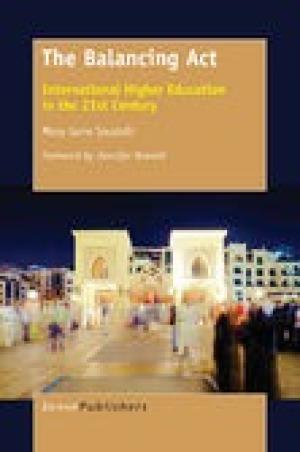
What can teachers of theology and religion learn from a text on contemporary global education? Moreover, “If our world is constantly changing, particularly with globalization, how can educators support the nature of change through curriculum, teaching, and learning, particularly in international contexts” (30)? Mary Gene Saudelli, a Canadian educator with a rich background of teaching abroad, highlights the significance of contextual considerations in twenty-first century teaching and learning through this case study of nineteen international educators at Dubai Women’s College in the United Arab Emirates. Within the pluralistic context of many of our classrooms, as well as the increased emphasis on internationalization in many of our institutions, theological and religious educators will benefit from Saudelli’s insightful analysis of contemporary educational theory and curriculum through a global lens. Divided into three modules, the first describes the context of the study along with a discussion of contemporary theories of adult learning, including sociology of education and change theories. Module 2 presents the international educators, the Emirati learners, and the curriculum. And Module 3 explores issues within the learning context: religion, culture, society, and language. Finally, a brief conclusion captures salient lessons learned from this case study with application to twenty-first century curriculum design. Saudelli’s analysis of contemporary learning theories in light of the global educational context is of particular significance as it represents the integrative thinking that is essential for our thinking and practice in culturally-responsive theological education. For example, she examines Knowles’ work on andragogy and Mezirow’s transformative learning theory from an international and intercultural perspective, indicating the implicit Western individualistic bias that undergirds these approaches to learning. Moreover, values such as empowerment or emancipation, lauded in contemporary adult education scholarship, may look quite different through the lens of a more restrictive Arab context. Saudelli’s description of twenty-first century learning and its implications for curriculum design is another helpful discussion. In her words, twenty-first century teaching and learning refers to “an orientation that recognizes the incredible change that has been ushered in by virtue of a dramatic technological evolution and advancements, globalization and cross-national migration of both people and information, and intense shifting of educational needs” (63). Such curriculum is interdisciplinary, experiential, balanced, and interconnected with both local and global contexts (63ff). Moreover, its design supports the development of key skills that students require to be equipped to address the opportunities and challenges in our ever-changing world. It may be instructive to consider how these criteria could contribute to shaping theological and religious studies within our own educational institutions. The section on faith is somewhat brief, especially given the enormous impact that religion has in the context of this study, the Arab world. And while the author does reference epistemological differences in the conclusion (179), a more robust discussion as to their significance for global education would be a welcome addition to her otherwise helpful synopsis in the final chapter. Thus, while the particulars of this case study may be unique, the author suggests that the text can be useful, “as a way to think about how we approach internationalization in education” (12). Moreover, its fresh perspective on curriculum and educational theory through a global lens is one that is worthy of consideration for contemporary theological educators.
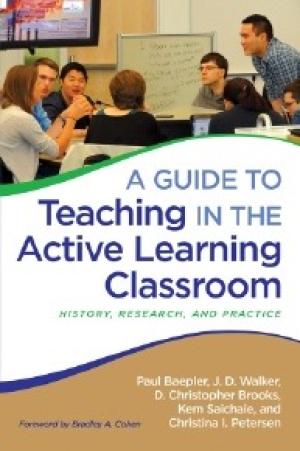
This book examines a particular type of classroom organization known as the “active learning classroom.” This type of classroom is not a lecture hall, but rather, is a room where there is no clear front or back, where students sit in movable chairs around round tables that facilitate group work shared with the larger group via screens. The very organization of the classroom forces the professor to have their back to at least some of the students all the time. This type of classroom interaction seems to be designed for larger class sizes, helping to transform a large lecture hall of students into a classroom where teacher and student interaction, as well as student-to-student interaction, is maximized. These types of classrooms have been shown to have a positive impact on students’ grades, which could be attributed to the room configuration inhibiting certain negative activities while encouraging positive ones. Active learning classrooms provide four main advantages: “immersion learning, the social dimension of learning, collaborative learning, and the performance aspect of teaching and learning” (16). Teaching in an active learning classroom is no longer just transmission of knowledge but a collaborative effort engaging the students for better and more long-term retention of knowledge. The subtitle of the book is “History, Research, and Practice.” The history of this method of teaching is covered in chapter one. The research that supports the practice is the focus of chapters two and three. Chapter two focuses more on the research aspects while chapter three focuses on the role that social interactions have in learning. The core of the book, chapters three through eight, gives practical suggestions on how to implement the teaching method, and presents common difficulties and how to overcome them. The last three chapters focus on how to help professors learn this method of teaching, a suggested methodology on how to study whether the change of teaching method had a positive impact on student learning, and what the future might hold for this teaching method. The book advocates a particular physical organization of the classroom. This is not up to the individual professors, but to the institutions in which they work. Even if one does not have the particular physical layout advocated in this book, there are a number of helpful tips for professors who seek to more actively engage their students. With chapters titled, “Assignments and Activities,” “Managing Student Groups,” and “Assessment and Feedback,” it is easy to find practical suggestions on how to make the classroom less didactic and more engaged. Each chapter has helpful and clear subheadings that make it easy to scan for the topic that one needs. Many of these methods are helpful in the religious studies classroom to help engage the student for a greater learning outcome. The examples in the book range from the sciences through to the humanities, helping a humanities professor get ideas on means of implementing the method in their own classroom.
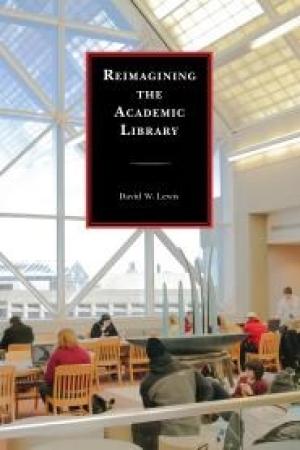
Technology and the digital age are rapidly changing the landscape of education. Theological institutions are not immune. Even though these changes can be difficult and painful, the fulfillment of our mission is enhanced and expanded when we embrace and lean into them. One big current issue is the future of our libraries – what the digital academic library looks like and what it will take to get there. Even though significant change is necessary, a discernable path forward does exist (viii). This includes a substantial change in the role of library staff and the roles libraries play in their institution. As digital technologies replace print as the primary means of access to nearly everything, libraries will “move from using technology to do old things in new ways to using technology to do new things” (vii, viii). This will require new technologies, strategies, values, and even a new culture (xv). It is encouraging that Lewis writes this as an academic librarian with forty plus years of experience. He is a digital immigrant who has learned to accept and navigate the changes. Instead of holding onto the comfortable past, he is excited about the future! This book reminds me of a well-written backcountry trail guide. It is divided into two sections. The first, “The Forces We Face,” describes the landscape, including the history and background; the second, “Steps Down the Road,” is the practical description of the trail ahead, including landmarks along the way. Whereas my backcountry guides discuss the flora, fauna, geology, people, and events significant to say Olympic National Park, Lewis takes us on a historical journey of academic libraries. The central theme is that libraries have always done three things: (a) kept documents for the long haul, (b) provided the knowledge and information that the communities and institutions that fund them need, and (c) assisted individuals in finding and using information (xi, 153). Libraries of the future will continue to do these same things, but how they do them will look different. The focus has been and will continue to be their role in research and preservation and distribution of scholarship. As with any trail guide, section two is the most important: the trail descriptions are found here. My backcountry guides list waypoints, elevation, mileage, landmarks, campsites, and other important information needed to successfully navigate the trail and arrive at the destination. Lewis in like manner describes important steps that need to be taken to arrive at his destination: an academic library, relevant and effective in the digital age. The trailhead is the library of the past, a place that builds local collections and staffs them with people who organize and know how to find the documents and facts in them (153). The destination at the end of the trail looks much different. Collections will be streamlined and library space will be utilized differently. Staff requirements and roles will not be the same. You will be uncomfortable with some of Lewis’ ideas, but you will be stretched and prompted to thought and healthy conversation. We are using the book for this purpose at Denver Seminary. I heartily recommend this book. The price may be high for a paperback, but this is a unique book that should be read by key members of every institution that wants to be proactive in moving ahead into the digital age. If nothing else, get ahold of a copy and read the Conclusion. This provides a quick summary of the major premises and practical steps.
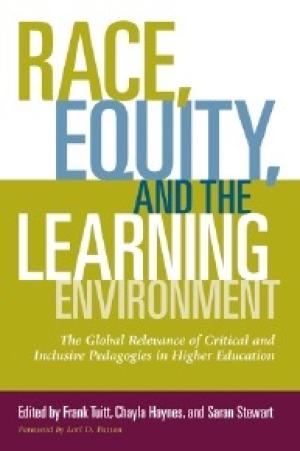
The recognition that students’ identities play a significant factor in learning has begun to impact university and college classrooms over the past few decades. In particular, there is recognition that racial identities of minority students and students of color shape their experience in the educational process. What has become increasingly apparent, and therefore in need of redress, is the lack of racial equity in pedagogical frameworks and practices. Race, Equity, and the Learning Environment: The Global Relevance of Critical and Inclusive Pedagogies in Higher Education brings these matters to the fore and argues that critical and inclusive pedagogies (CIPs) can, when employed effectively, offer a way forward. Such approaches are not new, but offer the promise of creating rich learning environments by “(a) prioritizing the intellectual and social development of students, (b) fostering classroom climates that challenge each student to achieve academically at high levels, (c) recognizing and cultivating the cultural and global differences that learners bring to the educational experience, and (d) engaging the ‘whole’ student (e.g., intellectually, spiritually, and emotionally) in the teaching and learning process” (2). The volume contains an introduction and conclusion, and in between are eleven essays reflectioning on CIPs at the intersection of race and higher education. The essays are divided into three sections covering theoretical dimensions (three essays), practical implications (four essays), and assessment (four essays). I have chosen to highlight one essay from each section that is particularly valuable for the religious studies classroom. In part one, “Pursuing Equity Through Diversity” (Bolitzer et al.) presents a series of valuable reflections on how student diversity can be used to encourage and achieve classroom equity. Using a multidisciplinary approach, the authors highlight three perspectives on diversity: as the intersection of identities and power, as fostering individual and collective growth, and within subject-matter learning. On this basis, they see diversity as a collective resource in the classroom that advances learning. In part two, Koshino’s article explores the racial climate and experience of a small midwestern college through interviews with students of color. The results enable her to hone in on some glaring deficiencies in the campus culture for minority students and suggest strategies for improvement in these areas. Finally, in part three Ghabra et al. critique the white, heterosexual, male norm of university classrooms through a framework informed by CIPs and intersectional sexuality. They highlight their use of performance writing to evaluate classroom interactions marked by an ethic of responsibility, love, and care. The result reveals how students and professors can work together to create inclusive spaces. Does the volume have value for the religious studies or theology classroom? Given the personal nature of religious exploration and study, the answer is a qualified “Yes!” I suspect teachers of religion will find the essays focused on theoretical issues of more value because of their broad application. However, the essays on practice and assessment also contain material that can be adapted to the religious studies classroom. At any rate, since race and religion intersect so dramatically (especially in the U.S.), CIPs offer a way for students to think critically not only about religion generally, but to do so in a manner that also affirms and values the perspectives of their fellow students. To the degree that these essays prompt deeper reflection on how teachers can engage students in these ways, they will prove a valuable addition to the religious studies toolbox of resources.
Wabash Center Staff Contact
Sarah Farmer, Ph.D
Associate Director
Wabash Center
farmers@wabash.edu